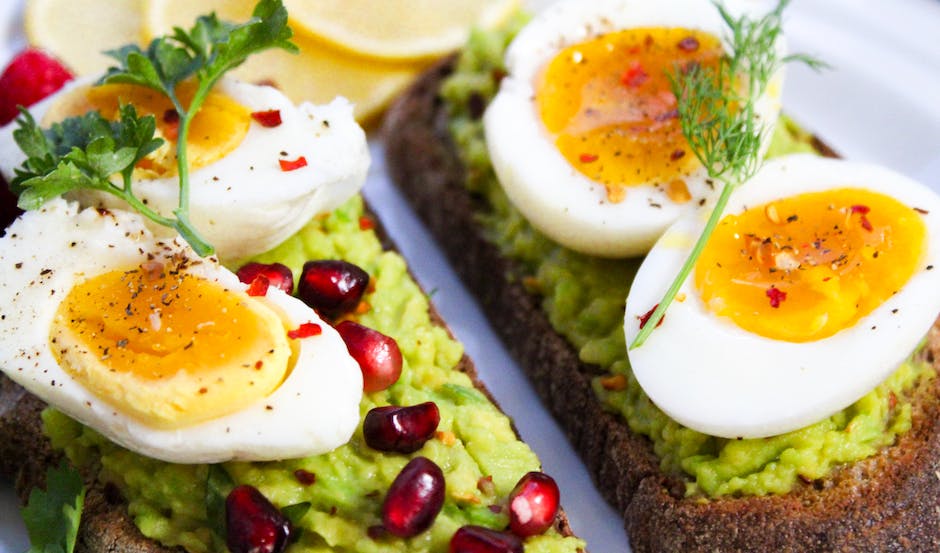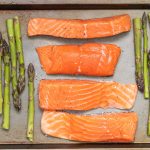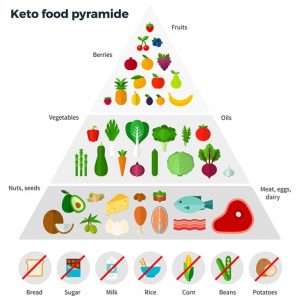Are you starting a ketogenic diet? Get ready for a new journey of healthy eating that can support your fitness and wellness goals. The keto diet is low in carbohydrates, moderate in protein, and high in fat – the key to success lies in stocking your kitchen with the right kinds of foods. Fortunately, you don’t have to reinvent the wheel to do this. Here is a list of the best foods to fuel your keto journey and ensure that reaching your goals is easy, delicious, and healthy.
Table of Contents
- 1. Pump Up Your Keto Diet with These Nutrient-Packed Foods
- 2. Kick-Start Your Keto Meal Plan with Superfoods
- 3. Optimal Nutrient Support for Long-Term Keto Success
- 4. Enjoying Delicious Low-Carb Dishes with Powerhouse Foods
- 5. Building a Healthy Keto Lifestyle with Nutrient-Rich Meals
- Q&A

1. Pump Up Your Keto Diet with These Nutrient-Packed Foods
If you’re on the keto diet, finding the right sources of nutrient-dense foods can be a challenge. Fortunately, some nutritious, delicious foods can easily be incorporated into your meal schedule to support a successful ketogenic diet. Here are some simple yet satisfying add-ons to consider.
- Avocados: Nature’s “superfood,” not only are they rich in healthy fats, but avocados are also an excellent source of B vitamins, vitamins K, C, E, and potassium. Add chopped, mashed or sliced avocados to salads and sandwiches or spread them on toast for a fiber-, protein- and mineral-packed boost to your meals.
- Leafy greens: Kale, collards, spinach, and other leafy greens are chock-full of vital vitamins and minerals, including A, K, C, iron, and calcium. Plus, they provide a filling yet low-calorie addition to salads, soups, sandwiches, and smoothies.
- Coconut: Coconut products such as coconut milk, oil, and flakes are an integral part of the keto diet. Coconut milk is a great source of fat and flavorful addition to smoothies, ice creams, and soups; and coconut flakes provide a delicious crunch to oatmeal, granola, and baked goods. Coconut oil can be used for cooking, in homemade muffins or for spreading on toast for added flavor.
- Shellfish: Delicate yet nutrient-dense shellfish such as shrimp, crab, mussels, and oysters are low in calories and carbohydrates, rich in protein, and full of B vitamins, zinc, potassium, and selenium.
- Nuts and seeds: Almonds, pecans, peanuts, pumpkin seeds, chia, and sunflower seeds are a great addition to any meal. They provide a healthy amount of protein, fiber, and fats, and they’re naturally low in carbohydrates. Sprinkle them on top of salads, stir-fries, and oatmeal, or just snack on them throughout the day.
These nutrient-dense foods are an important part of a successful keto diet, and can help you on the road to achieving your health goals. So, don’t forget to stock up on these delicious and nutritious additions to upgrade your diet today.
2. Kick-Start Your Keto Meal Plan with Superfoods
Are you ready to start your keto diet but feeling lost when it comes to meal planning? Kick-start your journey with the help of these amazing superfoods! They are packed with health benefits and will help you meet your dietary goals.
For a healthy and balanced meal, try incorporating these items:
- Avocado: High in healthy monounsaturated fats and a great source of fiber.
- Coconut oil: Not only is coconut oil rich in healthy fats, it also has antimicrobial properties.
- Leafy greens: Spinach, kale, and other greens are low in carbs and carry essential vitamins.
- Nuts: Full of healthy fats, proteins, and fiber, nuts are great for a keto-friendly snack or meal addition.
- Seafood: Not only are they a great source of protein, but fish are also a fantastic source of Omega-3 fatty acids.
With all these superfoods, you’ll be able to stay within keto guidelines and still enjoy meals that boast the essential vitamins and nutrients your body needs. Give yourself the best chance of success with a superfood-infused meal plan and watch your health improve in no time!
3. Optimal Nutrient Support for Long-Term Keto Success
Staying in ketosis requires proper support of macro- and micronutrients. Without nutrient balance, it won’t be possible to maintain the keto diet. In order to optimize the chances for long-term success, the below key elements need to be considered.
- Macronutrients: Careful monitoring of the macronutrient balance is essential in a ketogenic diet; the keto macros are usually 65-70% fat, 20-25% protein and 5-10% carbs.
- Micronutrients: When consuming fewer calories than usual, you need to pay increased attention to the intake of necessary vitamins, minerals such as calcium, magnesium, zinc, selenium and iron. They help the body in numerous processes, and supplementing with them is highly recommended.
It is important to pay attention to the quality of the food, the choice of ingredients and theinterconnectedness of proteins, carbohydrates and fats. By taking essential elements into account, it is possible to optimize the chances of long-term keto success in a healthy way.
4. Enjoying Delicious Low-Carb Dishes with Powerhouse Foods
Go Green! Eating healthy doesn’t mean you have to give up tasty dishes. In fact, powerhouse foods, such as spinach, kale, squash, and zucchini, are incredibly versatile and can easily be used to create delicious and nutritious meals and snacks. Here are a few ideas for incorporating these powerhouse foods into low-carb dishes to enjoy:
- Crispy zucchini fritters. Core and grate zucchini, then mix with grated cheese and herbs, seasonings, and an egg to hold the mixture together. Form patties and fry in a pan with oil.
- Kale pesto over spaghetti squash. Roast spaghetti squash and top with kale pesto for a flavorful and healthy meal.
- Grilled zucchini and squash noodles. Spiralize zucchini and squash into noodles, then drizzle with olive oil, garlic, and any other favorite seasonings. Grill for a few minutes over medium heat.
- Skillet-roasted spinach and mushrooms. Sauté mushrooms and garlic in a skillet, then add in fresh spinach. Simmer until wilted and serve over quinoa or whole grain toast.
Mixing and matching different powerhouse veggies with your favorite flavors and seasonings is a great way to create delicious and nutritious meals. Whether it’s a zucchini noodle stir-fry, squash and spinach lasagna, or roasted kale with sweet potatoes, get creative and enjoy the amazing health benefits of powerhouse foods while staying on a low-carb diet.
5. Building a Healthy Keto Lifestyle with Nutrient-Rich Meals
Eating a ketogenic diet means adhering to strict diet guidelines that require sticking to mostly fat, moderate protein, and very few carbs. But that doesn’t have to mean missing out on nutrition and flavorsome meals. Nutrient-rich ingredients are the key to building a healthy and sustainable keto diet.
Here are 5 ideas to make sure your keto meals stay full of essential vitamins and minerals:
- Incorporate variety: To make sure you don’t get bored and make sure your diet is well balanced, make it practice to incorporate different ingredients with each meal. Incorporate lean proteins, dark leafy greens, and healthy fats like avocado, walnuts, and olive oil.
- Include colored fruits and vegetables: Different-colored fruits and vegetables contain different important vitamins and minerals. Try to include as much color and variety to your diet as you can.
- Season your meals: Although sodium can be an issue on a keto diet, light seasoning can be used to increase flavor without packing a lot of sodium. Try using spices, garlic, and herbs – they are very high in nutrients and minerals.
- Choose nutrient-dense foods: Eating foods that have more nutritional value per calorie is essential for a healthy keto lifestyle. A handful of nuts, a few tablespoons of cream cheese, a few pieces of boiled eggs, or a small portion of fish are all good options.
- Drink and Eat more Water: Drinking adequate amounts of water is not only important for your overall health, but it is also essential for optimizing the ketogenic diet. Aim for at least 8 glasses of water throughout the day and include nutritious foods in your diet that contain high water content like soups, smoothies, and salads.
Nutrient-rich foods are the cornerstone of any healthy lifestyle, especially for those on a restrictive diet like the keto diet. With conscious food choices and an open mind, you can build a healthy keto lifestyle filled with flavor and varieties.
By incorporating these keto-friendly foods into your diet, you can fuel your body and support your journey! If you’re feeling adventurous, why not combine a few of them for an innovative, tasty treat? Wherever this keto diet takes you, we wish you all the best!











